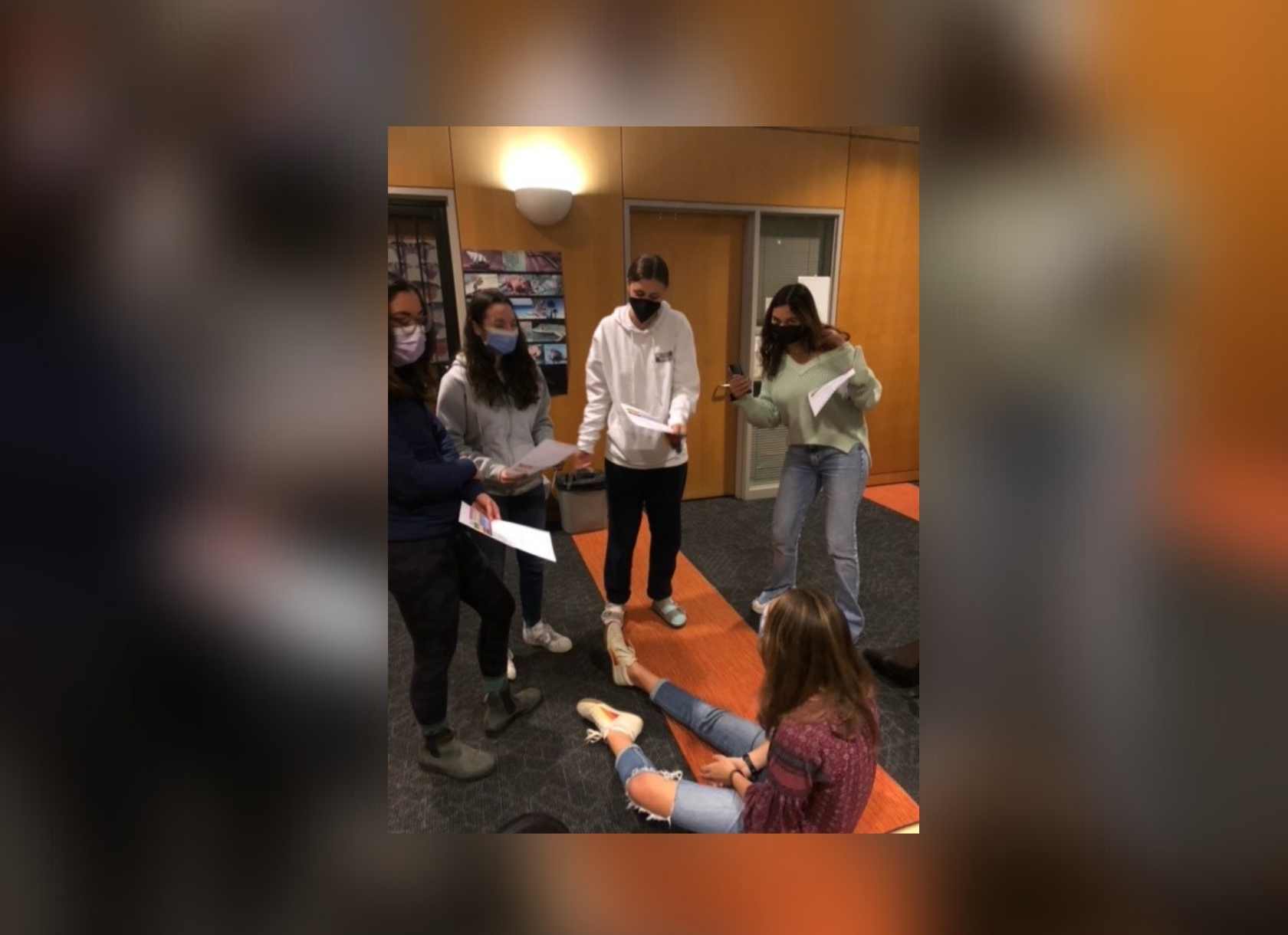By Katie Hanson ’25

Enter Classroom One in the basement of the W.M. Keck Science Department on a Monday night, and you’ll find a lively space with 60 students learning life-saving health care skills. Here, Claremont Colleges Emergency Medical Services (CCEMS), the largest pre-health club on campus, educates its members in a supportive, passionate community.
“Everyone knows your name; everyone’s really close,” Co-President Natalie Tsai ’22 says. “Most people come early to our meetings just to chat and then stay late. Our club members are also really passionate about expanding our knowledge and trying to make emergency medical services (EMS) education more accessible to everybody. That passion is contagious for everybody.”
After gaining her Emergency Medical Technician (EMT) certification in her home state the summer before her sophomore year, Tsai decided to join the club. She wanted to further the skills she learned that summer alongside students with similar interests.
Although Tsai joined the club as a general member, she soon became the club’s education and training chair, teaching fellow students basic life support skills during meetings. In her junior year, Tsai stepped into the role of vice president, planning activities for the club and coordinating programs with leadership. As current co-president, Tsai oversees the ever-growing club and plans new initiatives, while supporting the rest of the leadership team.
The robust club, open to students at all seven of The Claremont Colleges, has three focuses: EMT certification and education, community outreach, and on-campus EMS service. For EMT certification and education, the club partners with SoCal EMT and Fire Training in Upland, less than 10 minutes from campus. There, at a partially subsidized cost, club members can gain their EMT certification. The course is self-taught, with skills training sessions that focus on necessary on-the-job skills, such as how to use an oxygen tank, assess trauma, and handle spinal immobilization. To supplement individual learning, EMT-certified club members tutor those currently in the program, going over skills in club meetings. Tsai is one of the club’s tutors.
“I loved going through all the course material again and thinking about the best way to explain it to students,” Tsai says. “I think something that’s kind of difficult about going through self-taught courses is that you’re not really sure what’s super important and what you would see in the real world. I like to bring in my own perspective and share my knowledge and my experience with everybody.”
So far, Tsai says that more than 20 students have been certified through the CCEMS partnership with SoCal EMT and Fire Training. This summer, the club will continue tutoring and administer a schedule for students enrolled in the course. Club leadership also brings in physicians, nurse practitioners, and other healthcare workers to club meetings to discuss potential careers in medicine.
Communications Chair Emma Thomas ’22 is currently in the process of gaining her EMT certification through CCEMS’ partnership with SoCal EMT and Fire Training. Alongside her EMT course load, Thomas runs the club’s Instagram, Facebook, and TikTok accounts, as well as the club’s website.
Thomas, who plans to attend medical school after a few post-graduation gap years, is excited to receive her certification this summer. She says she’s interested in becoming an EMT between graduation and medical school.
“I’m really looking forward to receiving my certification,” Thomas says. “You can not only work as an EMT on an ambulance, but you can also get positions as an emergency room tech, medical scribe, or lifeguard. Something I’ve really liked about the club is that it showed me that I have an opportunity to get some jobs that I probably wouldn’t otherwise be able to get.”
The club’s outreach arm is planning an array of initiatives they hope to implement in the future. They are currently focused on developing their drug and alcohol initiative, through which they plan to educate students on how to administer Narcan during drug overdoses. Previously, the club has held different initiative-related events to discuss tolerance and safety measures.
When The Claremont Colleges initially transferred to online learning in March 2020, the club also developed their Satellite Learning Program, through which members tutored local K–12 students in a variety of subjects and provided funding for school supplies. Tsai says they advertised this free service on Nextdoor and Facebook. The Satellite Learning Program has now expanded nationally, with other locations at the University of California, Los Angeles and University of Pennsylvania campuses.
Tsai says that the club has experienced massive growth since the beginning of the COVID-19 pandemic, jumping from around 15 to 60 consistent, dedicated members.
“In the past two years it has grown exponentially,” Tsai says. “Now, we have students from every single college. It’s been surprising in a really positive way to see how fast the club grew and how excited people are to join it and get involved.”
The final arm of the club, on-campus EMS service, is focused on developing an EMT program in partnership with Campus Safety. The program initially launched in spring 2020, but was swiftly shut down with the start of the pandemic. Tsai says the club is anticipating a relaunch next fall, where EMT-certified club members would respond to medical emergencies on campus on Thursdays, Fridays, and Saturdays.
After trying out several clubs in her first two years of college, Thomas says CCEMS appealed to her immediately.
“As soon as I went to a club meeting, I felt like I was a part of that group,” Thomas says. “They were immediately getting me involved in stuff and asking about me, and it really just felt like it was a group that was super welcoming and wanted to work as a team.”

